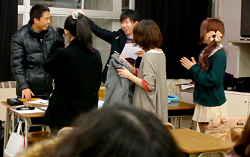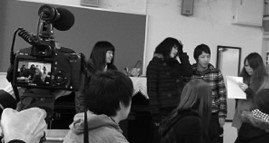Adult education pioneer Malcolm S. Knowles [2] observed that the foundation of the Western education system is built on “the art and science of teaching children.” However, the great teachers of history have been teachers of adults, not children. Aristotle, Confucius, the Buddha, Christ, the Hebrew prophets, and Plato used processes of active inquiry that contrast significantly with the passive reception model that dominates traditional education.
For example, Jesus used parables to help followers discover meaning and truth. Chinese and Hebrews applied a case method through which a group member would pose a problem for the group to explore and resolve. Using Socratic dialogue, the Greeks posed questions or dilemmas to groups. They asked the members to find an answer or solution by pooling experience. The Romans challenged members to state and defend positions.
Pedagogy slays the adult learner
The ancient focus on adult learners began to shift in the seventh century by introducing cathedral and monastic schools. With the primary purpose of indoctrinating youth, the monastic schools developed a set of assumptions about teaching youth that became known as pedagogy, meaning “the art and science of teaching children” [3].
Pedagogy became the dominant education model in the Western world and is the foundation of the American educational system. While teachers in philosophical, religious, and political realms continued to apply the adult teaching practices introduced by the ancients, western education systems became frozen in the pedagogical model.
Traditional education essentially ignored the adult. The few educational opportunities provided for adults were essentially considered as a means to offer adults something they should have had as children and taught adults as if they were children [2, p. 61].
Influential theorists like Freud and Piaget likely exacerbated this process. They proposed that all human development stops at adulthood. Similarly, cognitive models suggest that adulthood is a state of intellectual decline.
Resurrecting the adult learner
The conclusions of Piaget and cognitivism may seem counter-intuitive to virtually every adult who has experienced growth and transformation at all stages of life. Regardless, researchers tended to ignore the unique characteristics of adult learners until Thorndike published research showing that adults could learn.
Sorenson and Thorndike provided a scientific foundation for developing adult education programs by showing how adults and children have different interests and abilities. Lindeman [4, 5], influenced by John Dewey, laid an artistic foundation for adult education by offering the following key assumptions of adult learners:
- Adults are motivated to learn by satisfying needs and interests.
- Adult learning is life-centered.
- The richest source for adult learning is personal experience.
- Adults need to be autonomous.
- Individual differences increase with age.
The concept of adult education did not gain the full attention of educators until the late 1960s [6]. Malcolm Knowles [3] introduced andragogy, a set of assumptions that differentiated adult learning from child learning.
Adult education has since become a significant and growing emphasis in education, spawning numerous non-traditional programs designed to meet the developmental needs of adults. The growth of non-traditional higher education programs has forced traditional education institutions to transform programs for the emerging flood of adult learners into formal education programs. This has created opportunities for all institutions to rediscover ancient techniques and develop new processes to meet the developmental needs in emerging learning environments.





![Your brain can keep growing, adapting, and learning at any age, if you are willing to put in the effort [Image: Copilot]](/images/Images/best-years-for-adult-brain300.png)
